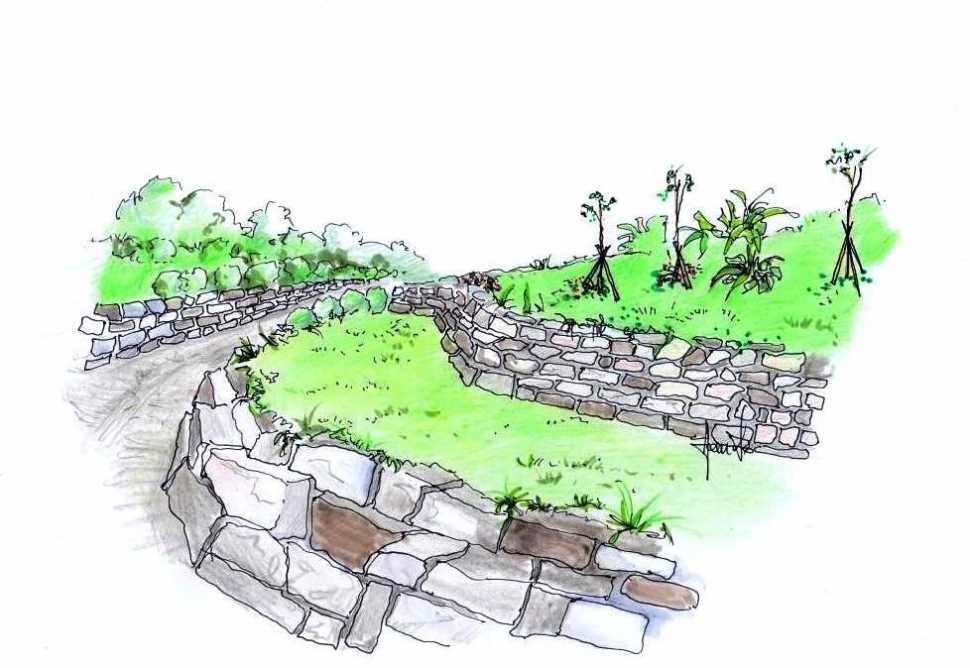The territory of Capolona is very suited to the production of truffles and plays an important role in the regional and national panorama. The presence of the precious white truffle (Tuber magnatum), the scorzone truffle (Tuber aestivum), the marzuolo truffle (Tuber borchii) has been ascertained. These ripen at different times of the year and therefore the collection activity can be prolonged for several months.
What is called truffle is the fruiting body (carpophore) of epigeal mushrooms of the genus Tuber. This name should not mislead; truffles are not tubers. Tuber comes from the Latin, 'tuber terrae' which was the term with which the ancient Romans called the truffle. The word then turned into Terri tufer, then Terri tuffum until you get to tartufum, and from this the term we use today.
Truffles are the result of the symbiosis of the mushroom with shrubs and trees. Plants and mushrooms have a mutual advantage from this union; the first gives away nutrients and the second gives away water and mineral salts. The fungal species plays the role of auxiliary root system creating a greater absorbing surface and in return receives the nourishment that alone could not produce. This is where the advantage of symbiosis lies for both organisms. The mushroom also hinders the entry of pathogenic organisms into the roots and therefore also plays a protective action against the plant.
The species of plants that establish the symbiosis with the mushroom can be various: willows, poplars, lindens, hornbeams, oaks, beeches, pines, cysts and kernels. Truffles are able to connect the root systems of plants, also belonging to different species and a single plant can be mycorrhized by different fungal species simultaneously.The truffle formation cycle lasts about 8 months. It begins, as for all mushrooms, with the release of spores; these have dimensions in the order of one thousandth of a millimeter and an ellipsoidal or globose shape. From the spores develop hyphae (cellular filaments) that create the mycelium called primary. This increases in the soil and when it encounters another one, there is a fusion with the creation of the secondary mycelium.
This new mycelium expands in the soil in search of the roots of the host plant. If he doesn’t find them soon, he runs out of nutrients and dies. In case the meeting happens, the hyphae wrap around the root tips (the tips of the thinnest roots) giving rise to mycorrhiza (hence the term mycorrhizal symbiosis). It seems that the plant produces substances that stimulate the approach of the mycelium. The mycorrhized roots have a club-shaped shape and are easily recognizable; in these, mycorrhizal glomeruli with a considerable biomass are created. Starting from the months of April-May, if the climatic conditions are favorable, the fructification can begin with the appearance of the primeval carpophores.
The truffle, once ripe, detaches from the plant and begins to live independently, absorbing organic substances from the soil. The carpophore, at full maturity, can have dimensions that vary from those of a hazelnut to those of an orange; it emits a characteristic smell mainly due to sulfur compounds.
The truffle must disperse the spores and this happens with the rotting or thanks to the animals that feed on them (especially wild boar). In this case the spores are released with the dejections.
Only in the 1800s it was understood what reality they were and how truffles were formed, noting that the mycelium truffle develops in the soil in close contact with the roots of plants.
The carpophore, or the harvested truffle, has an external rind (peridium) that can be smooth or wrinkled, light or dark in color, and an internal pulp (gleba). This may have a variable color from white, to brown, to grey, to pink and shows streaks due to the alternation of light and dark hyphae that give it a 'marbled' appearance. The pale streaks are sterile hyphae (which do not produce spores), whilst the dark ones contain fertile hyphae, specialized for the reproduction. In the fertile part there are the asci, tiny globular structures containing the spores.
The characteristics of the rind and pulp, together with the size and aroma, make it possible to identify the species of truffle. Sometimes it is necessary to observe the shape and color of the spores to arrive at the recognition.
Man has always been attracted by truffles, for the particular sensorial notes and for the difficulty of harvesting. Already in the time of the Babylonians, Egyptians and Sumerians, truffles were considered something very valuable. Throughout history they have often been elevated to a symbol of wealth and opulence and have had the place of honor on the tables of nobles, popes and royal families. Their aroma was considered a kind of 'fifth essence' capable of causing ecstatic effects.
Their origin remained unknown until the 19th century. In ancient times they were considered 'imperfect plants', because they lack roots, leaves and flowers or the result of the lightning bolts thrown by the gods. In the Middle Ages it was attributed to the demonic origins of truffles, so much so that they were defined as 'dung of the devil' or 'witch food'. The study of the physiological and ecological characteristics of the truffle continues today and there are still several aspects to be clarified. Truffles are affected by climate change and the abundance of boars. There are also anthropogenic pressures due to the increase in researchers, the changed techniques of management of agriculture and forestry, the development of urban infrastructure and roads. Since the 60s of the last century it has been possible to perfect a method to obtain mycorrhized seedlings and then start the cultivation of truffles. A cultivated truffle farm comes into production after the fifth-sixth year however this becomes commercially interesting only from the tenth year.

